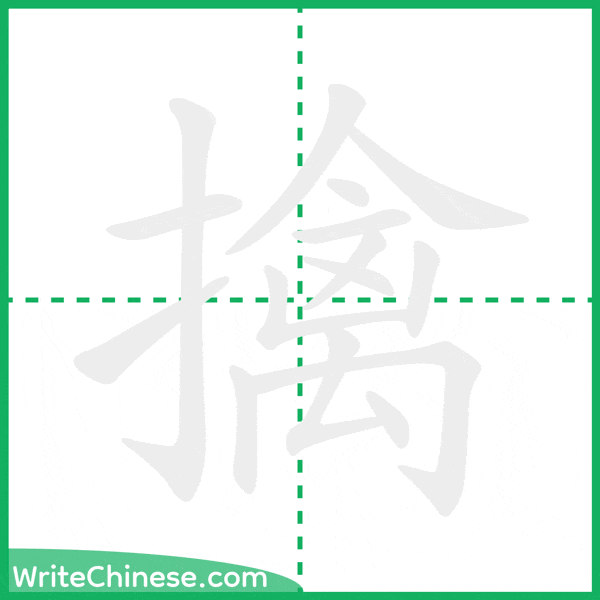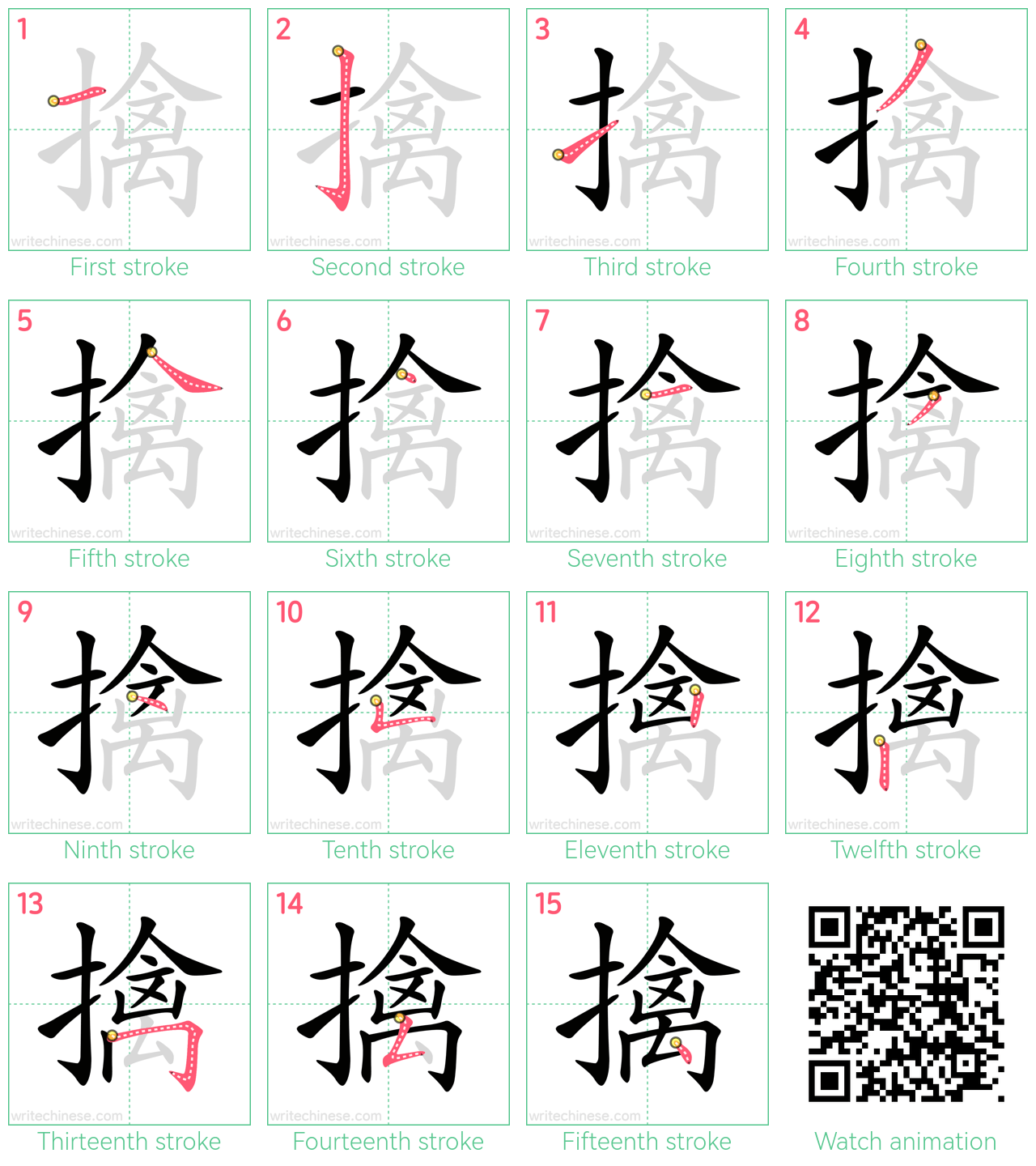How to write 擒
Animated Stroke Order of 擒
Learn to write the Chinese character "擒" by watching the stroke order animation of "擒".

Stroke by Stroke: 擒 Writing Order
Master the Chinese character '擒' stroke by stroke with visual step-by-step instructions.

Follow the Calligraphy Master: Writing '擒' Step-by-Step
Learn the proper way to write the Chinese character '擒' through a video tutorial with a calligraphy teacher. Follow the Calligraphy Master's Step-by-Step Guide to Write the Chinese Character '擒'. You can download the printable handwriting worksheets below and practice writing together with pen and paper.
Free Printable 擒 Handwriting Practice Worksheets
Meaning of 擒
Same Pronunciation Characters
Same Radical Characters
- 才
- 扎
- 扑
- 扒
- 打
- 扔
- 托
- 扛
- 扣
- 执
- 扩
- 扫
- 扬
- 扭
- 扮
- 扯
- 扰
- 扳
- 扶
- 批
- 扼
- 找
- 技
- 抄
- 把
- 抑
- 抒
- 投
- 抗
- 折
- 抚
- 抛
- 抠
- 抡
- 抢
- 护
- 报
- 披
- 抬
- 抱
- 抵
- 抹
- 押
- 抽
- 拂
- 拄
- 担
- 拆
- 拇
- 拉
- 拌
- 拍
- 拎
- 拐
- 拒
- 拓
- 拔
- 拖
- 拗
- 拘
- 拙
- 招
- 拟
- 拢
- 拣
- 拥
- 拦
- 拧
- 拨
- 择
- 括
- 拭
- 拯
- 拱
- 拴
- 拷
- 拼
- 拽
- 拾
- 持
- 挂
- 指
- 按
- 挎
- 挑
- 挖
- 挟
- 挠
- 挡
- 挣
- 挤
- 挥
- 挨
- 挪
- 挫
- 振
- 挺
- 挽
- 捂
- 捅
- 捆
- 捉
- 捌
- 捍
- 捎
- 捏
- 捐
- 捕
- 捞
- 损
- 捡
- 换
- 捣
- 据
- 捶
- 捺
- 捻
- 掀
- 掂
- 授
- 掉
- 掏
- 掐
- 排
- 掘
- 掠
- 探
- 接
- 控
- 推
- 掩
- 措
- 掷
- 掺
- 揉
- 揍
- 描
- 提
- 插
- 握
- 揣
- 揩
- 揪
- 揭
- 援
- 揽
- 搀
- 搅
- 搏
- 搓
- 搔
- 搜
- 搞
- 搬
- 搭
- 携
- 摄
- 摇
- 摊
- 摔
- 摘
- 摧
- 摸
- 撇
- 撑
- 撒
- 撕
- 撞
- 撤
- 撩
- 撬
- 播
- 撮
- 撰
- 撵
- 撼
- 擂
- 擅
- 操
- 擒
- 擦
- 扦
- 扪
- 抃
- 抉
- 抟
- 抨
- 抻
- 抿
- 拈
- 拊
- 拮
- 挝
- 挞
- 挢
- 挹
- 捃
- 捋
- 捩
- 捭
- 掇
- 掊
- 掖
- 掬
- 掮
- 掳
- 掴
- 掸
- 掼
- 掾
- 揄
- 揆
- 揖
- 揠
- 揶
- 揸
- 揿
- 搋
- 搐
- 搛
- 搠
- 搡
- 搦
- 搪
- 搽
- 摁
- 摅
- 摈
- 摒
- 摞
- 摭
- 摽
- 撂
- 撄
- 撅
- 撙
- 撷
- 撸
- 撺
- 擀
- 擞
- 擢
- 擤
- 攉
- 攒
- 攘
- 攥
- 攫
- 攮
- 扌
- 払
- 扢
- 拋
- 拑
- 拚
- 拶
- 挾
- 捨
- 捫
- 捱
- 捲
- 掃
- 掄
- 掎
- 掙
- 掛
- 採
- 掭
- 揀
- 揎
- 揚
- 換
- 揞
- 揮
- 揲
- 搌
- 損
- 搖
- 搗
- 搶
- 摀
- 摑
- 摟
- 摳
- 摶
- 摺
- 摻
- 撈
- 撐
- 撓
- 撖
- 撣
- 撥
- 撫
- 撲
- 撳
- 撻
- 撾
- 撿
- 擁


